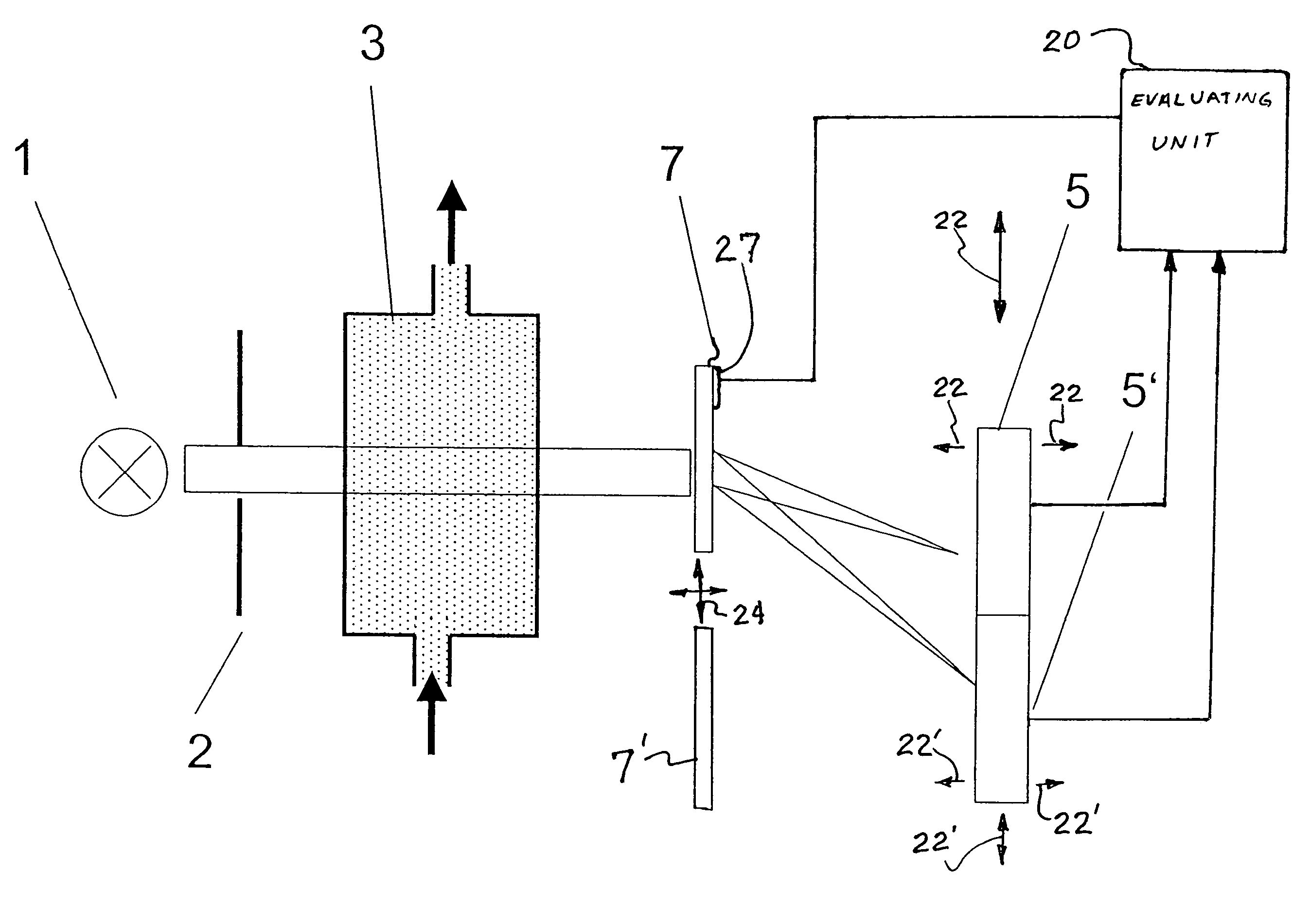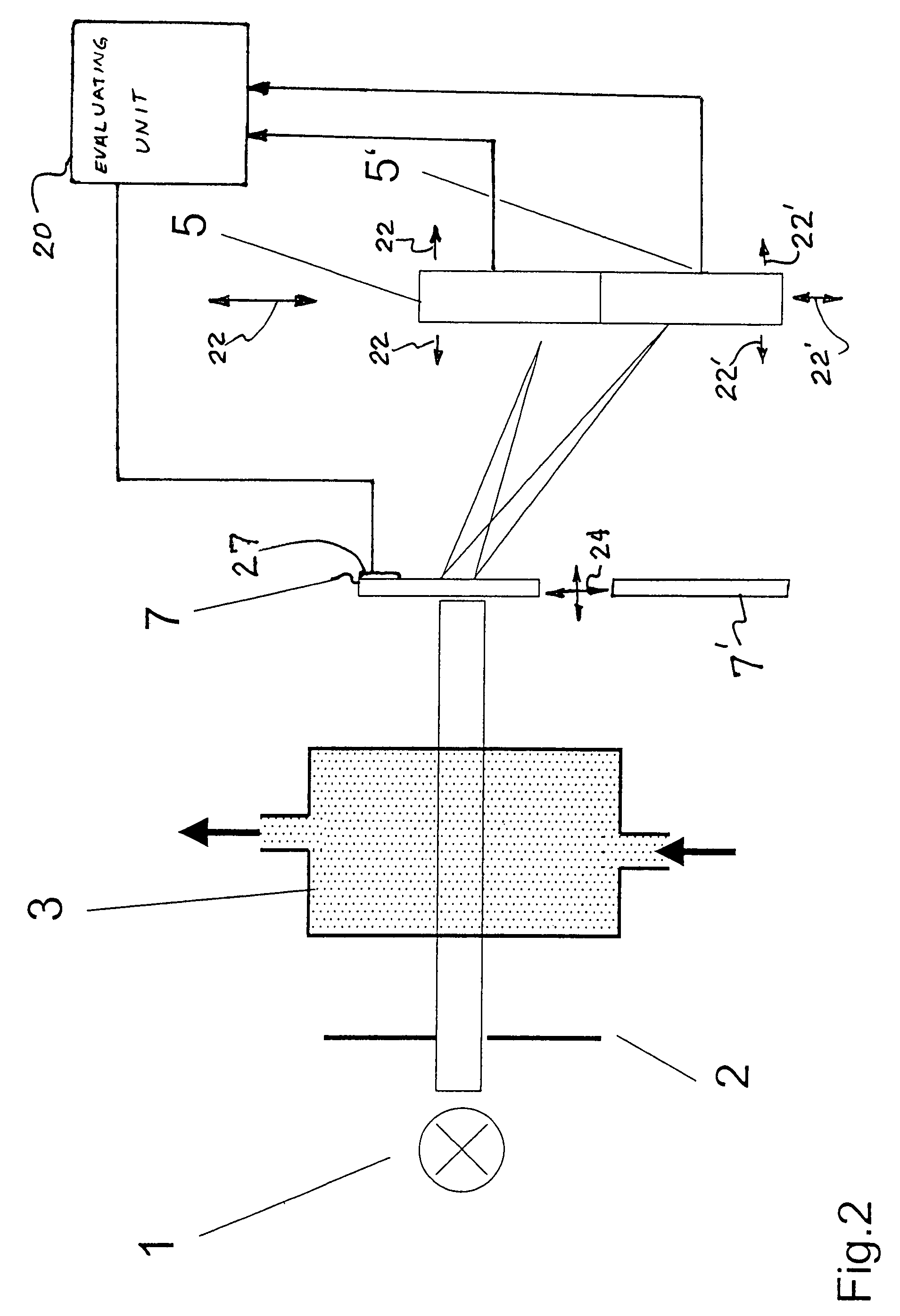Device for the analysis of the qualitative composition of gases
a technology of qualitative composition and gas, which is applied in the direction of optical radiation measurement, instruments, spectrometry/spectrophotometry/monochromators, etc., can solve the problems of low sensitivity, high cost of such devices, and often impossible to go below a certain cost limit, etc., to achieve high sensitivity, high degree of protection against distortion, and low cost
- Summary
- Abstract
- Description
- Claims
- Application Information
AI Technical Summary
Benefits of technology
Problems solved by technology
Method used
Image
Examples
Embodiment Construction
[0028]Referring to the drawings in particular, in FIG. 1, a light source 1 is shown sending measuring light in the infrared spectral range. The measuring light passes through a diaphragm 2 and an absorption chamber 3 before it reaches a beam splitter 4. The gas to be analyzed is sent through the absorption chamber 3. As a result, interactions will take place between the gas to be analyzed and the measuring light, which can lead to absorption and / or emission effects. Components of the light exiting from the absorption chamber 3 are deflected by the beam splitter 4 to detectors 5, 5′, in front of which interference filters 6, 6′ are arranged, which ensure that only light of the wavelength range that is to be detected by the particular detector 5, 5′ will indeed generate a signal.
[0029]FIG. 2 shows the schematic view of a device according to the present invention, an IR sensor with a refractive-diffractive optical element (RDOE) 7. This likewise has an arrangement comprising a light so...
PUM
 Login to View More
Login to View More Abstract
Description
Claims
Application Information
 Login to View More
Login to View More - R&D
- Intellectual Property
- Life Sciences
- Materials
- Tech Scout
- Unparalleled Data Quality
- Higher Quality Content
- 60% Fewer Hallucinations
Browse by: Latest US Patents, China's latest patents, Technical Efficacy Thesaurus, Application Domain, Technology Topic, Popular Technical Reports.
© 2025 PatSnap. All rights reserved.Legal|Privacy policy|Modern Slavery Act Transparency Statement|Sitemap|About US| Contact US: help@patsnap.com



